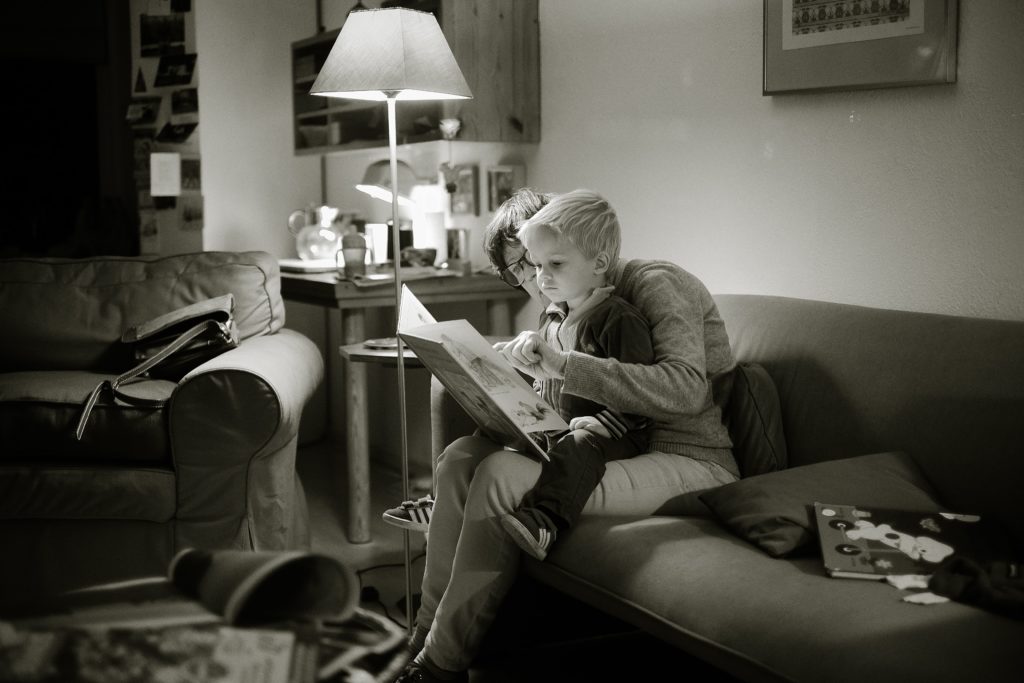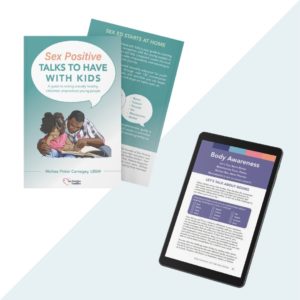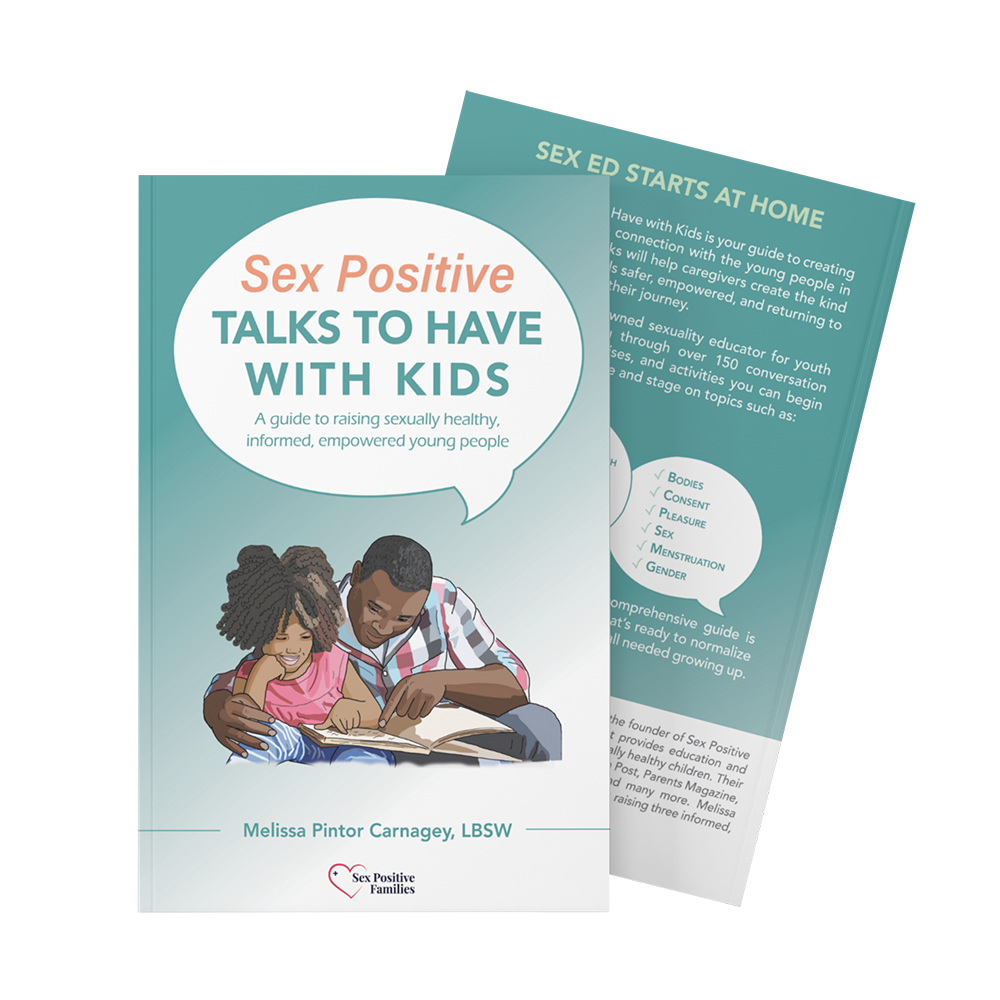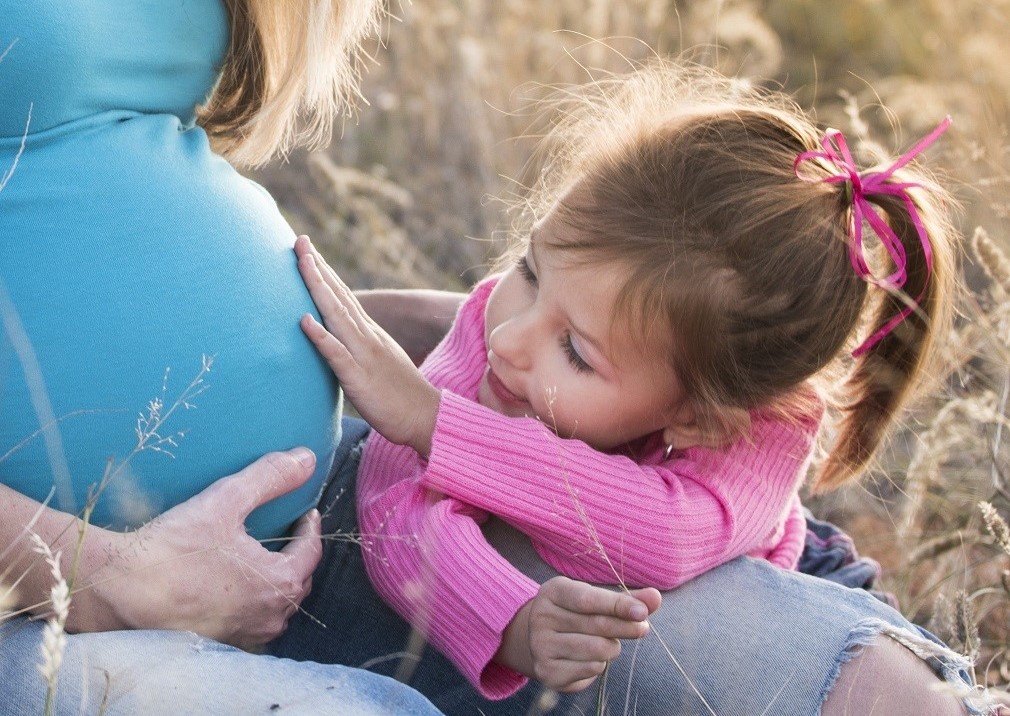At some point, early in the growth of a child (and often before we’re fully ready for it) we may be hit with this sweet question, born of a healthy and natural sense of curiosity: “Where do babies come from?” If not prepared, hands may become clammy, and the mind might go blank. You also may discover you’ve developed a stutter or that something sounding far off base and plain incorrect may come flying out of your mouth in a desperate attempt for a response. If any of these symptoms happen, rest assured it would be totally common. Many of us didn’t have early talks modeled for us growing up and we’ve been conditioned to clam up, feel awkward, or to resort to uncomfortable silence or outright lies.
Try not to panic. This is an opportunity. You’ve got this, and we can help.
Think of this query as a chance to begin laying the foundation of sex positive parenting. Explaining where babies come from is often one of the earliest sexual health talks a caregiver can have with a child, and it is a great opportunity to begin empowering children from a sex positive perspective: ready or not.

When answering a child’s questions, shoot for simple and direct. Ideally, this early talk will create the foundation for later talks that will go more in-depth once your child is ready for more information. Below, we offer 5 responses that are shame-free, accurate and inclusive. Feel free to pick and choose what feels right for your family and your child’s age:
“Where do you think babies come from?”
This may seem like a cop out on the surface, but starting here can ensure that you get a very clear picture of the context of their question. It also gives them the space to share the things they may have heard already, which you can then address so that you clear up any misconceptions or misinformation.
“They grow in the uterus, which is a part of the body.”
A simple response like this may be enough for that child in that moment. This explanation is accurate and straightforward, and depending on the age of the child and their readiness for information, it can be a great starting point to expand on in later talks.
“Babies are made when a sperm and an ovum join together. Sperm comes from a person with testes, and an ovum comes from a person with a uterus.”
Straightforward and honest but with a bit more detail. This answer gives them accurate anatomical terms, which could spark more conversation, or could be enough to satisfy their curiosity for that moment. If introducing the concept of sex feels right in that moment, check out Six Answers to Kids’ Questions About Sex. Either way, the goal is to share the information in the same matter-of-fact and taboo-free way you might talk about where tears come from.
“When babies are ready to be born, they may come out through the parent’s vagina, or a doctor makes a cut in the abdomen area for the baby to come out of. If the baby comes out this way, they give the parent medicine, so it doesn’t hurt as much.”
This answer is an inclusive option that focuses on the childbirth process. It’s great to open their minds early to the reality that there isn’t just one way babies enter this world. This response often sparks further questions and reflections about what the犀利士 ir own birth was like. If adoption or surrogacy are part of their story, this book can be a great read to support the talks.

“That’s such a great question! I know a book that can help show you more about this. Let’s check it out together!”
This response is perfect for a child who wants to know more details. It also takes the pressure off of you, so that you don’t feel as though you need to know all the facts and terms. Books are great in that they use pictures and simple language for different age groups. Our recommended starters are What Makes a Baby by Cory Silverberg and Making a Baby by Rachel Greener. We have an ever expanding reading list with age-congruent books perfect for these early talks. Videos can also be a fun and engaging way to learn about these topics. A great sex positive resource to check out is offered by AMAZE Jr.
Raising sexually healthy children means not shying away from curiosities, no matter how uncomfortable we may feel discussing anatomy, reproduction, and sex, or how awkward the words (initially) may sound coming from our mouths. Self-compassion is important as you work toward growing in confidence about addressing these early curiosities in more honest and comfortable ways.
Practice is your friend! If you want to feel super prepared, imagine yourself having this conversation before it happens (and even practice saying the words out loud). This can help to calm your discomfort, and make words like vagina and sperm more familiar, so that these talks feel less awkward. If your answers are honest and your demeanor relaxed and confident, you are laying the groundwork for the kids in your life to feel comfortable continuing to come back to you with their questions and curiosities, without shame or fear.
Using accurate information to support a child’s growing knowledge of themselves and the world around them can be hard work, but it’s worth it. Together, we can put our kids on the path to becoming confident, informed, and empowered decision makers.
You’ve got this!
P.S. The examples given are just a few of the many, many ways you can answer this question from a sex positive standpoint. What are some of the ways you have answered in the past, and how has it worked for you and the child in your life?
 For a guide made just for parents and caregivers to tackle sexual health talks at every age and stage, check out our bestselling book Sex Positive Talks to Have With Kids: A guide to raising sexually healthy, informed, empowered young people.
For a guide made just for parents and caregivers to tackle sexual health talks at every age and stage, check out our bestselling book Sex Positive Talks to Have With Kids: A guide to raising sexually healthy, informed, empowered young people.

Sex Positive Talks to Have With Kids is the bestselling guide to creating an open, shame-free connection with the young people in your world.
It’s an inclusive, medically accurate, and comprehensive resource that walks you through over 150 conversation starters, reflection exercises, and activities you can begin implementing at every age and stage to normalize sexual health talks and become the trusted adult we all needed growing up.
